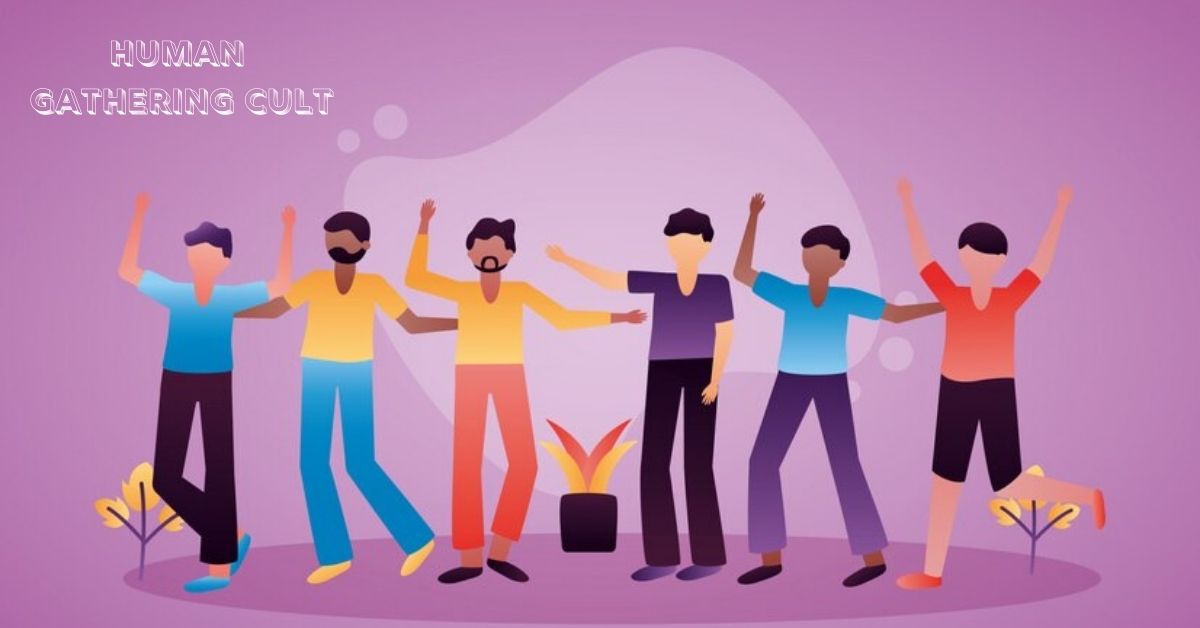When we talk about cults, the term often conjures images of secretive, extreme groups. human gathering cult are a specific type that focus on communal living and collective beliefs. They usually revolve around intense shared experiences and often lead to close-knit, isolated communities. But what exactly defines these groups? Let’s dive into the world of human gathering cults to understand their nature, history, and impact.
What Defines a Cult?
A cult is generally defined as a group with religious, spiritual, or philosophical beliefs that deviate from mainstream norms. What sets human gathering cults apart is their focus on creating a highly cohesive community, often under the guidance of a charismatic leader. These groups may have unusual or extreme practices, but their defining feature is the intense collective experience they offer their members.
Overview of Human Gathering Cults
Human gathering cults are characterized by their emphasis on communal activities, shared rituals, and a strong sense of belonging. These groups often appeal to individuals seeking deep connections or answers to life’s big questions. They can vary widely in their beliefs and practices, but all share a focus on collective experiences.
Historical Background
To truly understand human gathering cults, we need to look at their historical roots. From ancient times to the present day, these groups have evolved and adapted, reflecting broader social and cultural changes.
Origins and Evolution
The concept of human gathering cults is not new. Throughout history, various groups have formed around charismatic leaders and shared ideologies. These early cults often centered on religious or philosophical themes and were marked by intense communal experiences.
Major Historical Human Gathering Cults
Several historical cults provide insight into the evolution of human gathering groups. For example, the Shakers and the Oneida Community were 19th-century groups that emphasized communal living and shared beliefs. Their practices and organizational structures offer a glimpse into how human gathering cults have developed over time.
Beliefs and Practices
What makes human gathering cults distinct is their unique set of beliefs and practices. These often include elaborate rituals, a strong focus on communal living, and a hierarchical structure centered around a charismatic leader.
Core Beliefs
The core beliefs of human gathering cults can vary greatly, but they generally involve a shared ideology that sets them apart from mainstream society. This could be a unique interpretation of religious texts, a specific spiritual practice, or a distinct philosophical outlook.
Rituals and Ceremonies
Rituals and ceremonies are central to human gathering cults. These practices are designed to reinforce group cohesion and individual commitment. They can range from daily rituals to elaborate ceremonies marking significant events in the group’s calendar.
Role of Leadership
Leadership within human gathering cults is often highly centralized. The leader is typically seen as a guiding figure or even a divine being. This centralization of power can have a profound impact on the group’s dynamics and practices.
Psychological and Sociological Aspects
Human gathering cults have a significant psychological and sociological impact on their members. Understanding these aspects is crucial for grasping why people join and remain in such groups.
Psychological Appeal of Human Gathering Cults
The psychological appeal of human gathering cults often lies in their promise of community and belonging. For individuals feeling isolated or seeking deeper meaning, these groups offer a sense of connection and purpose.
Sociological Impact on Members
The sociological impact of being part of a human gathering cult can be profound. Members often experience a strong sense of identity and belonging, but they may also face challenges such as isolation from outside society and intense group pressure.
Methods of Recruitment
Recruitment into human gathering cults can be subtle or overt. These groups often use persuasive techniques to attract new members, such as offering emotional support, promising spiritual enlightenment, or creating an exclusive community.
Case Studies
Examining real-life examples of human gathering cults can provide valuable insights into their operation and impact. These case studies highlight the diversity and complexity of such groups.
The Heaven’s Gate Cult
One of the most notorious human gathering cults in recent history is Heaven’s Gate. Founded by Marshall Applewhite and Bonnie Nettles, the group gained attention for its apocalyptic beliefs and mass suicide in 1997.
The Branch Davidians
The Branch Davidians, led by David Koresh, became widely known due to the 1993 Waco siege. The group’s apocalyptic beliefs and the tragic outcome of the siege offer a stark example of the dangers associated with extreme cults.
Modern Examples of Human Gathering Cults
While historical examples provide context, modern human gathering cults continue to emerge. These contemporary groups often adapt traditional practices to fit modern contexts, reflecting ongoing societal changes.
Legal and Ethical Considerations
Human gathering cults raise various legal and ethical questions. Understanding these issues is essential for addressing the challenges posed by such groups.
Legal Status of Cults
The legal status of cults varies by country. In some places, cults are regulated or monitored, while in others, they operate with little oversight. Legal considerations often involve issues related to freedom of religion and personal autonomy.
Ethical Concerns and Controversies
Human gathering cults often face ethical controversies, particularly regarding their treatment of members and their impact on society. These concerns include issues of manipulation, coercion, and exploitation.
Government and Societal Responses
Governments and societies respond to human gathering cults in various ways. Responses may include legal action, public education campaigns, and support services for individuals affected by cults.
Prevention and Support
Addressing the challenges posed by human gathering cults involves prevention and support efforts. These initiatives aim to educate the public, assist former members, and provide resources for those affected by cults.
Recognizing Warning Signs
Recognizing the warning signs of a human gathering cult can help individuals avoid becoming involved. These signs may include charismatic leaders, isolation from outside society, and intense group pressure.
Support for Former Members
Former members of human gathering cults often require support to reintegrate into society. This support may include counseling, social services, and assistance with rebuilding personal connections.
Educational Programs and Resources
Educational programs and resources play a crucial role in preventing cult involvement and supporting those affected. These programs often focus on raising awareness and providing information about the risks and signs of cultic behavior.
Conclusion
Human gathering cults are complex and multifaceted phenomena with a rich history and diverse practices. Understanding their beliefs, practices, and impacts is crucial for addressing the challenges they pose and supporting those affected. By recognizing the warning signs and providing support, we can help mitigate the risks associated with these groups and foster a more informed and resilient society.
FAQs
What is a human gathering cult?
A human gathering cult is a group characterized by intense communal living and shared beliefs, often led by a charismatic leader. These groups focus on creating a cohesive community through unique rituals and practices.
How do human gathering cults operate?
Human gathering cults operate through a combination of communal activities, shared beliefs, and charismatic leadership. They often use rituals and ceremonies to reinforce group cohesion and individual commitment.
Are there any famous human gathering cults?
Yes, notable examples include the Heaven’s Gate cult and the Branch Davidians. These groups are known for their extreme beliefs and the dramatic events associated with them.









